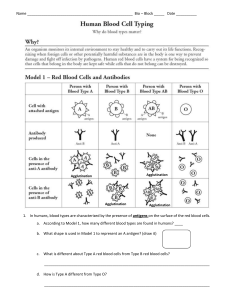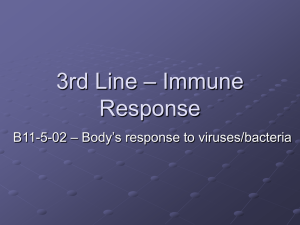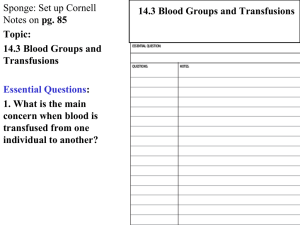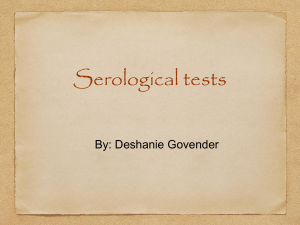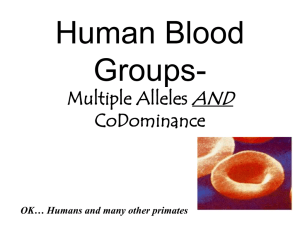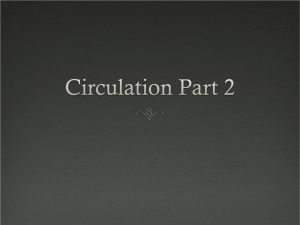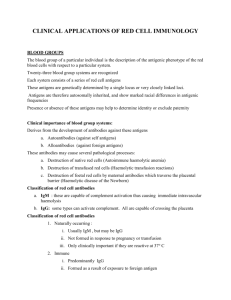Why Opposites Attract: Blood Agglutination
advertisement
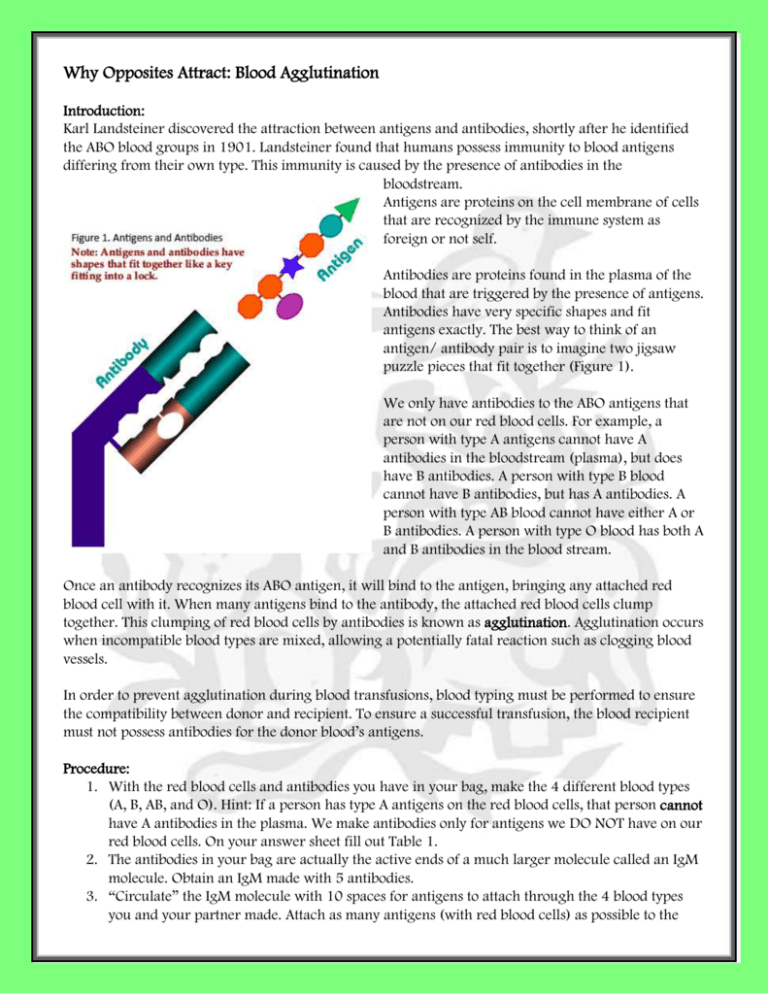
Why Opposites Attract: Blood Agglutination Introduction: Karl Landsteiner discovered the attraction between antigens and antibodies, shortly after he identified the ABO blood groups in 1901. Landsteiner found that humans possess immunity to blood antigens differing from their own type. This immunity is caused by the presence of antibodies in the bloodstream. Antigens are proteins on the cell membrane of cells that are recognized by the immune system as foreign or not self. Antibodies are proteins found in the plasma of the blood that are triggered by the presence of antigens. Antibodies have very specific shapes and fit antigens exactly. The best way to think of an antigen/ antibody pair is to imagine two jigsaw puzzle pieces that fit together (Figure 1). We only have antibodies to the ABO antigens that are not on our red blood cells. For example, a person with type A antigens cannot have A antibodies in the bloodstream (plasma), but does have B antibodies. A person with type B blood cannot have B antibodies, but has A antibodies. A person with type AB blood cannot have either A or B antibodies. A person with type O blood has both A and B antibodies in the blood stream. Once an antibody recognizes its ABO antigen, it will bind to the antigen, bringing any attached red blood cell with it. When many antigens bind to the antibody, the attached red blood cells clump together. This clumping of red blood cells by antibodies is known as agglutination. Agglutination occurs when incompatible blood types are mixed, allowing a potentially fatal reaction such as clogging blood vessels. In order to prevent agglutination during blood transfusions, blood typing must be performed to ensure the compatibility between donor and recipient. To ensure a successful transfusion, the blood recipient must not possess antibodies for the donor blood’s antigens. Procedure: 1. With the red blood cells and antibodies you have in your bag, make the 4 different blood types (A, B, AB, and O). Hint: If a person has type A antigens on the red blood cells, that person cannot have A antibodies in the plasma. We make antibodies only for antigens we DO NOT have on our red blood cells. On your answer sheet fill out Table 1. 2. The antibodies in your bag are actually the active ends of a much larger molecule called an IgM molecule. Obtain an IgM made with 5 antibodies. 3. “Circulate” the IgM molecule with 10 spaces for antigens to attach through the 4 blood types you and your partner made. Attach as many antigens (with red blood cells) as possible to the antibody ends. This process of agglutination is the basis of a test used to determine a person’s blood type. 4. As you attach the antigens, notice what happens to the red blood cells. On your answer sheet draw a diagram showing how the antibodies and antigens attach, with the accompanying red blood cells. Why Opposites Attract: Blood Agglutination Name: Table 1: Based upon what you have discovered about antigens and antibodies, fill in Table 1 below. Blood Type Antigen on Red Blood Cells Antibody in Plasma of Bloodstream A B AB O 1. Draw a diagram showing how B antibodies and B antigens attached to each other. 2. Draw a diagram showing what happened to the red blood cells when the antigens and their antibodies attached to each other. Be sure to label the antigens, antibodies and red blood cells. Note: This process is called agglutination. 3. If your blood type is O+ to whom can you safely donate? 4. If your blood type is A+ from whom can you safely receive blood? 5. In the next lab, you will be mixing your blood with different types of antiserum to determine your blood type. In the table below, give the expected agglutination result when the different blood types are mixed with each antiserum. Answer yes if you expect agglutination to occur or no if you do not expect agglutination to occur. Remember agglutination occurs when the antiserum matches the antigens on the surface of the red blood cell. Blood Type Anti A Anti B Anti Rh A+ yes no yes no no no AB+ BAB+ ABO+ O-
